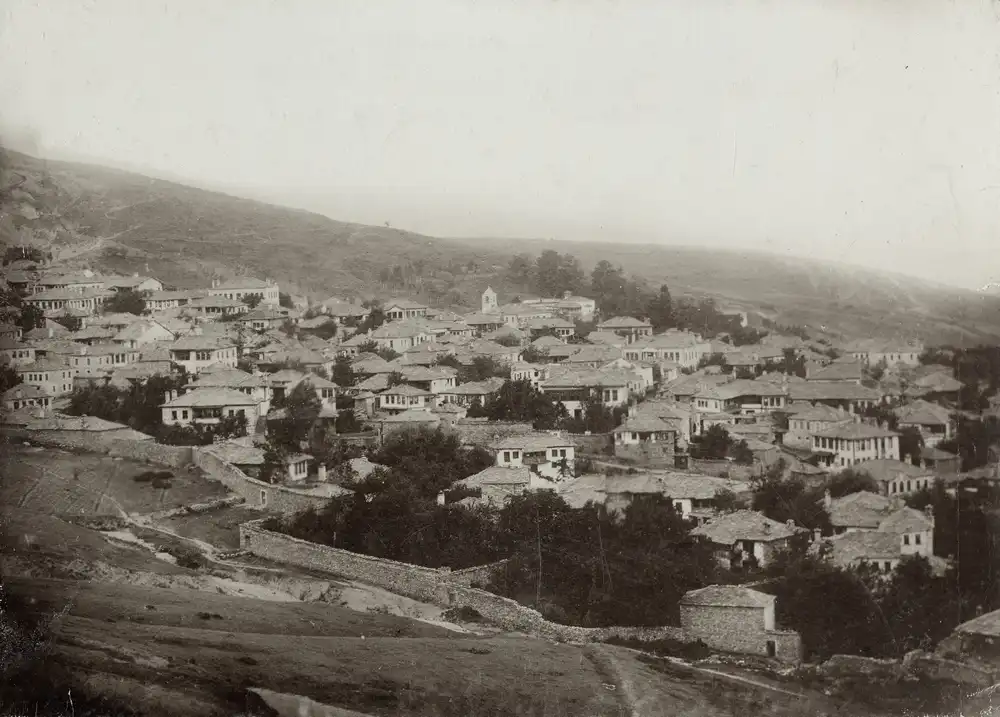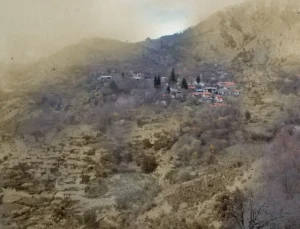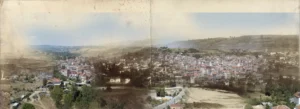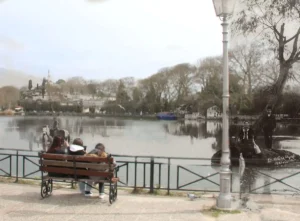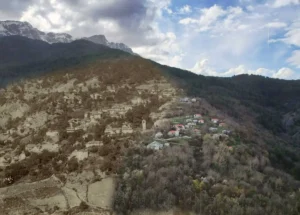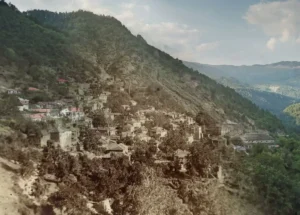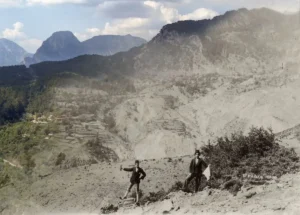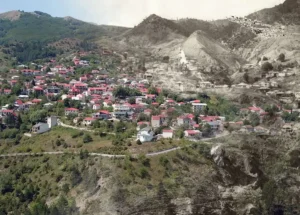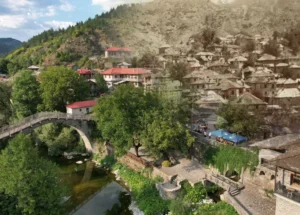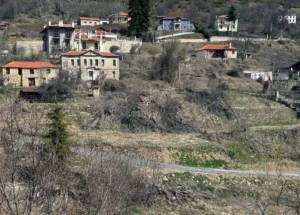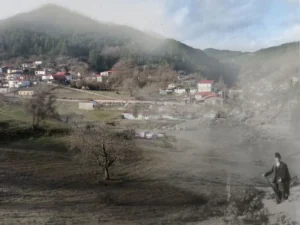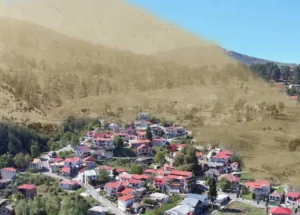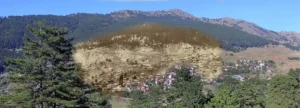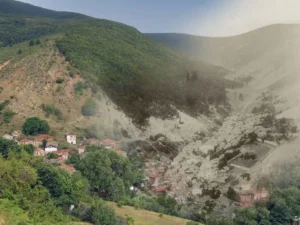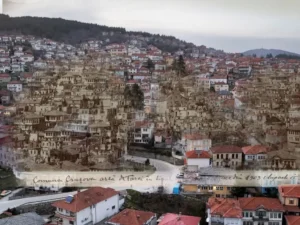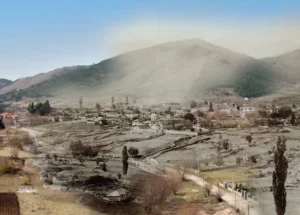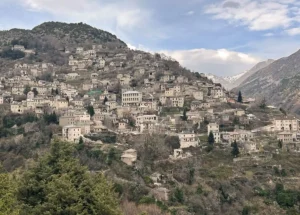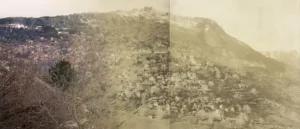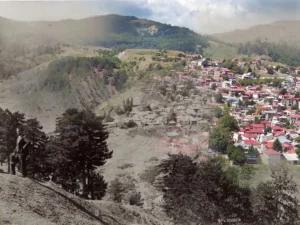

After Kruševo, the journey tracing the Manakia brothers’ photographs led to Trnovo (Târnova in Vlach) and Magarevo (Magarova in Vlach), two villages near Bitola. The names were clearly noted in the Romanian Peasant Museum’s archives. However, on site, nothing resembled the old images. These once-prosperous villages were destroyed by German troops during World War II. It wasn’t surprising that we could not locate the original buildings, but the mountains didn’t match the original images either – and mountains don’t change much in 100 years. After a day of exploring, I realized it was because of a technical detail: the Manakia brothers’ photographic technique often blurred backgrounds, and when translating their work onto paper, they suppressed the mountains to focus on the villages.
In Trnovo and Magarevo, I gathered stories of war and departure. Only a few old houses remained, none of which appeared in the original photographs. In Trnovo, the only survivor from the Manakia brothers’ photo was a tall plane tree, once next to the church and the first Romanian school in the Balkans. In many Vlach villages, legends tie the founding of a settlement to the planting of a tree. The last remnant of old Trnovo, this ancient tree stands as a living symbol of the village’s origins. In Magarevo, I determined that the photograph was taken from the bridge that marked the boundary between the two villages, another symbolic location according to ancient legends.

